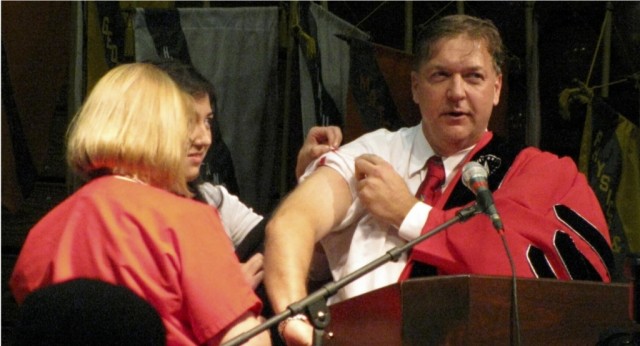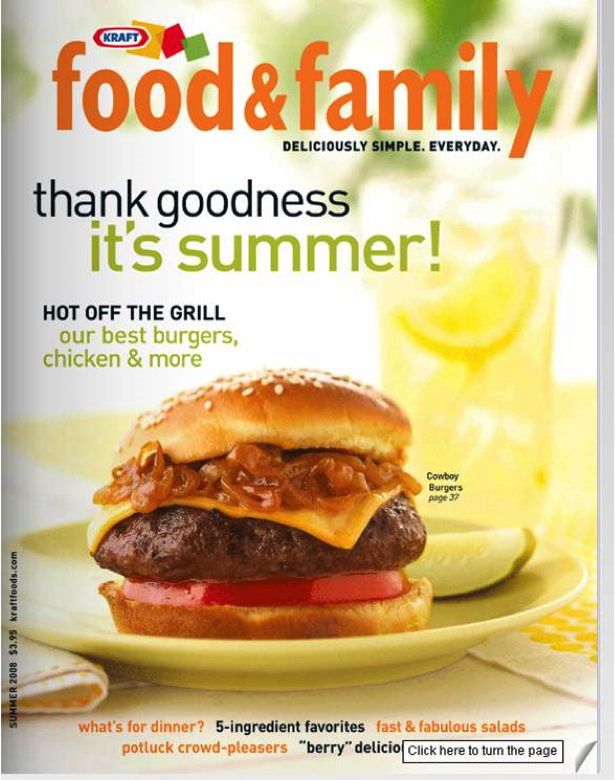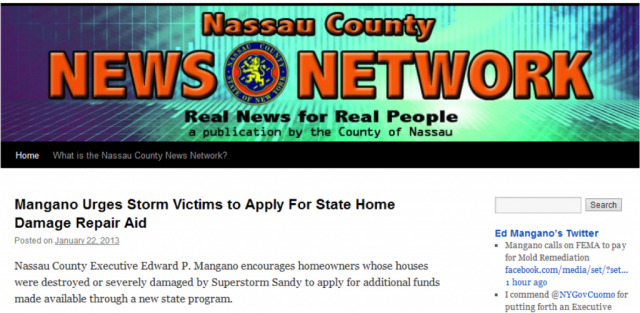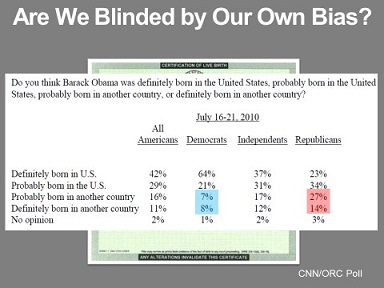Lesson Outline
Lesson 1
Course Outcomes:
At the end of this lesson, students will be able to:
- Define News Literacy and its importance
- Explain how two information revolutions shaped history.
- Use specific news events as examples to demonstrate course concepts like the impacts of the two communication revolutions at the heart of this lecture.
Introduction
Stony Brook University has pioneered this course in News Literacy, because you are citizens of a democracy that heavily relies on the work of the news media. We teach students to find reliable information they need to take full command of the incredible powers that were reserved to every citizen under our constitution: the power to think for ourselves and to speak for ourselves as a means to govern ourselves. Used frivolously, these powers are easy to dismiss. Radio shlock jocks exercise free speech, but to what end?
Used thoughtlessly, your powers as citizens can also be dangerous. Reacting to scared expressions by U.S. citizens, our government moved Japanese Americans out of their homes and into detention camps during World War II. With the support of voters and Congress, African Americans were routinely denied equal treatment. Using our power to think and speak for ourselves, citizens did that. It wasn’t some abstract THEM… it was US.
Used skillfully, our powers - to assemble peacefully, speak forcefully and govern ourselves - those powers often make America the gold standard for justice and freedom and a haven for the world’s freest and finest minds. But the constitution’s framers assumed citizens were worthy of these powers when they were well-informed. Information, reliable information that you can act upon is the foundation of self-governance. But the world is flailing its way through an information revolution of historic importance.
Analyzing and finding reliable information, is the point of this course on News Literacy. You will be asking yourself: What can I conclude from this news report? How do I know I’m getting the truth?
Key Lesson 1:
In the Information Age, You the consumer are in charge of determining what is reliable and what is not
News Literacy is the ability to use critical thinking skills to judge the reliability and credibility of news reports, whether they come via print, television, radio or internet.
If reliable information is the foundation of self-governance, who decides what is reliable?
Example: The forged birth certificate indicating that Obama was not born in the U.S., and therefore would not eligible to be President. Hundreds of thousands of Americans apparently believe this to be true, despite the release of his long-form Hawaii birth certificate. News consumers can be easily deceived by images
 Photo of Sarah Palin in a bikini and un-known party girl, toting a pellet gun, whose body was photo-shopped onto Palin’s head.
Photo of Sarah Palin in a bikini and un-known party girl, toting a pellet gun, whose body was photo-shopped onto Palin’s head.
The time that the photo on the left circulated, Sarah Palin was Governor of Alaska, but she had just been selected as the Republican Party’s nominee for Vice President of the United States. This image, and several others of her in miniskirts and lingerie, were widely distributed during the 2008 campaign in order to diminish her in the eyes of voters.
Key Lesson 2:
Reliable information is actionable information.
It allows news consumers to make a decision, take action or make a judgment.
The responsibility for determining what is true and what is not now rests with you.
When CNN broadcast Secretary of State Colin Powell ’s Feb. 2003 testimony at the U.N. , Americans were convinced we needed to stop Saddam Hussein from using poison gas and biological weapons on Iraqi citizens. It turned out not to be true. And in Iraq, 4,000 US soldiers died and more than 140,000 Iraqis died in a 10-year war. Voters expressing themselves in polls and congressional elections, were at first in support of the war. It grew less popular and we withdrew from Iraq. This month we learn that Fallujah, Iraq has fallen to al Qaeda forces. This, just months after Congress and the President were seriously considering the use of U.S. forces in Syria to settle ethnic, political and familial battles not unlike those in Iraq, where we were told we would secure democracy and a U.S. ally.
In this course, we’ll talk about how to test evidence and how to weigh sources of information so that you can decide what to think, rather than hoping belief will get you through.
Take a look at this video:
Now ask your self: Would this influence me to not get a vaccine to the H1N1 Flu Virus?
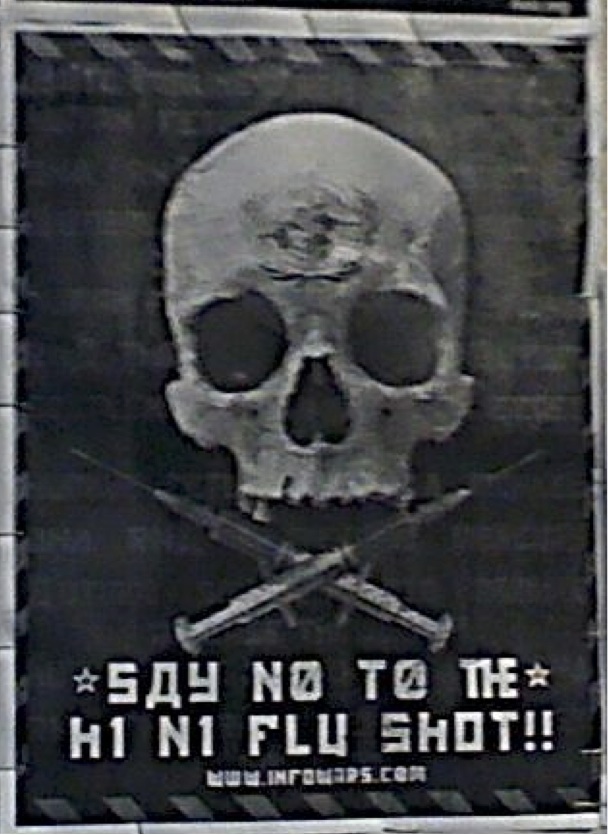 These signs were posted on Stony Brook University's campus warning students to not get the H1N1 Vaccine
These signs were posted on Stony Brook University's campus warning students to not get the H1N1 Vaccine
When the H1N1 swine flu outbreak hit two years ago, these skull and bones posters went up all over Stony Brook's campus, with “Infowars.com” brochures claiming H1N1 vaccine would cause all manner of health problems. Many students did not get their H1N1 shot, and in the latest CDC study, published by The Lancet medical journal, we learn that unlike almost all other flu outbreaks, the vast majority of deaths were in young people, NOT the elderly. What can you conclude?
Would this influence your decision on whether to get vaccinated for the H1N1 flu? Why or Why not?
Stanley, who studies immunology and virology, used his Inauguration as a chance to be publicly vaccinated to make the point that there is zero quality science to support the claims of celebrity activists that vaccination causes autism or other health defects.
Here’s a chilling fact about the decision of students that year to trust former Playboy bunny Jenny McCarthy more than the medical establishment…In mid August of this year (2013), the US Centers for Disease Control published its data on the hundreds of thousands of people killed worldwide by H1N1 flu.
The Course Lessons: A Primer
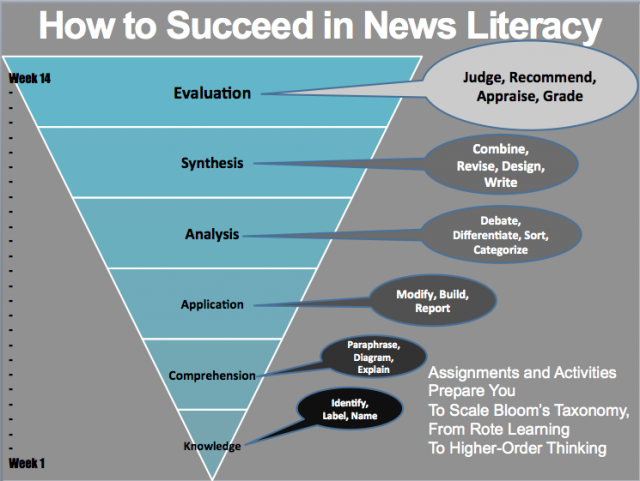 We start, at Lesson 1, with the mere accumulation of knowledge. We end, Lesson 14, with what we call “Deconstruction” (or Analysis) which is a methodical evaluation of the reliability of a piece of information. That’s an archetypal progression from lower-order cognition to higher-order thinking.
We start, at Lesson 1, with the mere accumulation of knowledge. We end, Lesson 14, with what we call “Deconstruction” (or Analysis) which is a methodical evaluation of the reliability of a piece of information. That’s an archetypal progression from lower-order cognition to higher-order thinking.
Success, in News Literacy, is built on important verbs. When you accumulate knowledge, you can identify, label and name.
Comprehension is demonstrated through diagrams, explanations and re-statement of ideas in your own words. Applying News Literacy concepts, you will modify them.
As we move through this course, your work will take you up and down Bloom’s Taxonomy.
Some sample concepts we will be discussing:
CONCEPT: What is the Mission of the American Press
Is Edward Snowden a Whistleblower or a Traitor?
Does the First Amendment protect what he did?
How about journalists who publish the material he has leaked?
How much freedom is enough, how much is too much?
We’ll talk about this.
CONCEPT: What is the value, and danger, of opinion in your information diet?
A lot of opinions get expressed in the news. Does Opinion help or hinder your search for actionable information?
Are all opinions created equal?
How do you know when you’re getting opinion versus when you’re getting facts?
We’ll talk about this.
CONCEPT: What is News and Who Decides?
The job market is terrible, the climate seems to have gone nuts, and this is what we’re spending reporters’ time chasing? Justin Bieber’s speeding ticket? Richard Sherman’s shrill smack-talk?
Really?
Who decided the rantings of a self-described simple redneck, on topics of race and sexuality, should get non-stop coverage for two weeks, while Immigration Reform got ignored?
Why doesn’t the news media focus on things that matter to me? Net Neutrality slipped right under the radar. The historic nuclear deal with Iran dropped off our collective radar screen.
Why is there so much fluff and trivia? Is it the audience’s fault, or the News Media’s fault?
CONCEPT: What is News and Who Decides?
This is the news? All this bad stuff? At a time when US and Chinese manufacturing activity are at multi-month highs and Economists forecast improving labor market conditions will help the US economy gain momentum in the second half of 2013 and into 2014….In the UK: Child deaths from heart defects have plummeted 83 percent in three decades…A senior Pakistani Taliban commander has welcomed the government's recent offer to hold peace talks… and the monsoon rains in India seem to foretell a bigger rice crop than usual, which is vital to feeding the world’s hungry.
Why is there so much bad news?
Note for teachers: The point is to introduce some of the concepts illustrated by recent events, and to pique student interest with provocative questions.
CONCEPT: In the age of Social Media, we are all Publishers and Broadcasters, with the attendant obligations AND powers
In the hours after the Boston Marathon bombing, it was exciting to see Internet-izens banding together in the ManHunt for the bombers. On Reddit, where they really understand the power of crowd-sourcing, distributed computing and the other wonders of the Web, power users vacuumed up every photo they could find on Facebook™, Twitter™, and Instagram™ and shared them with friends and followers to scrutinize and analyze. Then, by combining vague police statements and photos, they found in all those crowds of people at the marathon, the bad guys. The New York Post, following along with Reddit, grabbed the photo and plastered it on the front page. It was a demonstration of the great power of social media to help informed citizens take care of problems without the government’s help.
Only it was the wrong pair of young men. 16-year-old Salaheddin Barhoum and 24-year old Yassine Zaimi are totally innocent.
The two runners from Massachusetts have filed a lawsuit, suing the Post for libel, negligent infliction of emotional distress, and invasion of privacy. They may get some money, but will they ever get their reputations back?
Reddit is exempt from libel actions? Ooops777, one of the leaders of the Reddit manhunt, said he needed to post a request that Reddit users not re-post things that haven’t been proven.
So, what is social media…reliable and free of corporate and government control…or reckless and dangerously uncontrollable?
Now we’re going to look at the context that surrounds the social media revolution.
THE REVOLUTION(S) IN COMMUNICATIONS:
You are living through the 2nd Information Revolution in 450 years. The two people we chose to represent those revolutions.
Gutenberg was an entrepreneur who changed the world by making books easy to make and cheap to buy.
He tried to cash in on the growth of the Catholic Church and, ironically, helped launch the Protestant Reformation.
Zuckerberg is a techie who changed the world by making self-expression into the top social and entertainment activity of 1.1 Billion people. He started out just trying to pick up college girls and, ironically, created one of the great fortunes of our time.
It has never been more challenging to be a news consumer. Because of this revolution there is more information available to common folks than ever before and almost anyone can publish and distribute to the world.
Example: Leif Erickson discovered America around the year 1000. Christopher Columbus wandered in a half-millennium later. Why did Columbus get the credit? His discovery came just 23 years after invention and popularization of the press. He could spread the word and did. His book was reprinted across Europe. Erickson didn’t get credit until archaeologists confirmed legends previously dismissed as drunken bragadoccio.
How significant was Gutenberg’s invention? It took a scribe, typically a monk, a year to create a bible, using a quill and ink-pot. In the early 1450s, silversmith Johann Gutenberg started casting standardized mass-produced, moveable letters, or type, which could be easily rearranged for re-use. He adapted a wine press with a screw gear to firmly press paper down on the inked letters, and exponentially sped up the process… By 1455 he had started printing his first bibles. Gutenberg printed about 180 bibles his first year. With experience, a printer could soon produce 50 books per week.
 Printed religious text, like Gutenberg’s 200-odd bibles (In latin. 42 lines per page) put the “word of God” into the hands of the laity and were shipped all over Europe. At the time the press was invented, Oxford University, the seat of all knowledge in the English-speaking world was already 200 years old. Yet it had just 122 books in its library. 50 years later, there were 10 million books in circulation. Cheap books meant education spread beyond the Church and the Nobility and down to the masses.The press is credited with creating a middle class of merchants and tradespeople who taught themselves new skills and sold services and wares, sometimes even getting rich as the landed aristocracy.100 years after Gutenberg, one-time reports of a current event, called “news books” appeared, reporting on the eruption of Mt. Vesuvius, for instance. By 1604, the first newspaper appeared in Antwerp, Belgium: the Nieuwe Tijdingen (“New Tidings”)
Printed religious text, like Gutenberg’s 200-odd bibles (In latin. 42 lines per page) put the “word of God” into the hands of the laity and were shipped all over Europe. At the time the press was invented, Oxford University, the seat of all knowledge in the English-speaking world was already 200 years old. Yet it had just 122 books in its library. 50 years later, there were 10 million books in circulation. Cheap books meant education spread beyond the Church and the Nobility and down to the masses.The press is credited with creating a middle class of merchants and tradespeople who taught themselves new skills and sold services and wares, sometimes even getting rich as the landed aristocracy.100 years after Gutenberg, one-time reports of a current event, called “news books” appeared, reporting on the eruption of Mt. Vesuvius, for instance. By 1604, the first newspaper appeared in Antwerp, Belgium: the Nieuwe Tijdingen (“New Tidings”)
Martin Luther Luther translated the bible out of the scholar’s language, Latin, into the commoner’s language: German. Luther’s “Protestant Reformation”, challenged the authority of the Catholic Church to sell indulgences – forgiveness of sins – and shook the foundations of the all-powerful Roman Catholic Church.
So, the real revolution was not technological, but intellectual or at least social.
Ultimately, access to new ideas and to scientific and other books allowed people to learn new skills and to challenge authority on its own terms. Thomas Paine’s “Common Sense”, which argued a continent the size of North America should not be ruled by a tiny island, was a best-seller of the American Revolution. Colonists bought an estimated 10,000 copies. Cheaply printed, easily bought, Paine’s book built support for the American uprising against British rule. BUT the printed word and mass-produced books also introduced the concept of mass deceptions.
Printing was fast, but distribution was still slow: by ship or horse. The Treaty of Ghent ended the war of 1812 between the U.S. and Great Britain on Dec. 24, 1814. But because word did not reach U.S. Troops in time, the battle of New Orleans was fought 15 days after the war ended and 2,000 soldiers were killed. But all that would change… 370 years after Gutenberg with the invention of the telegraph and Morse code.
INFORMATION SPEEDS UP and increases tradeoffs between speed and accuracy.
The telegraph, which shot tiny electric signals across the country on rickety wires, made it possible to distribute news great distances the moment it happened, in time for publication in the next edition of the newspaper. This would revolutionize war reporting during the civil war, with lists of each day’s casualties, etc. But the temptation to race new information into print also meant false information got published before it could be verified. 150 years ago, people’s complaints about Telegrams were identical to complaints you hear about Twitter: too short to be accurate, often inflammatory, idiotic. And because journalists could now report live from the battlefield, they did.
Radio
Now the pace of change accelerates: Radio Developed by Tesla, Fessenden and Marconi, radio broadcast made it possible by 1920 to hear live broadcasts of the result of the presidential elections for the first time. This was the first medium by which people could remotely witness events as they happened. Just like the Internet, radio had to battle the established news business.
“The radio news item is a vibration in the air, without record, without visible responsibility, without that incentive to accuracy that comes with print,” The New York Times wrote in a 1929 editorial. But Americans loved radio. So much so that it has occasionally been asserted that when the Depression hit, the last belonging a bankrupt family would give up was its radio.
The 1937 crash of the Hindenburg, an experimental aircraft, was broadcast live on radio. At the same time, it was filmed. First we’ll listen to the radio report and then see the change in impact as the moving picture is added. This is an after-the fact combination, but it dramatically illustrates the impact of adding moving pictures to recorded sound.
On the one hand, these “actualities” - recorded sounds and moving images – serve as powerful verification of the truth. On the other hand, sound and image jack up the emotional impact.
Every advance in these information revolutions has great promise and great risk.
When Apollo 11 landed on the moon on July 20, 1969, there was a television camera aboard and millions of people around the world watched it live. It was the biggest television audience to date. Here’s the irony about 1969. While we were celebrating live TV from the moon and the engineering of giant rockets for interplanetary flight, the Internet was already forming.
ARPANET- created in 1969 - was set up as a means to share data and computing resources. UCLA hosted the first node on ARPANET, the second was at a defense contractor called BBN, the third at Stanford Research Institute. In October the first host-to-host message, an email, was sent from UCLA to Stanford. By the end of the year, the University of Utah and UC Santa Barbara were added to ARPANET, giving the network four host computers and the beginnings of the Internet. It wasn’t obvious this was the next big thing. AT&T was invited to be a part of the ARPANET project but declined, believing that “packet switching “ technology would never work. Like the press, telegrams, radio, and TV…it would take a while to catch on, but when it did, it changed everything…again.
The Information Revolution 2.0
Between the end of Bush’s first term, and the beginning of Obama’s first term, Web 2.0 changed the rules.
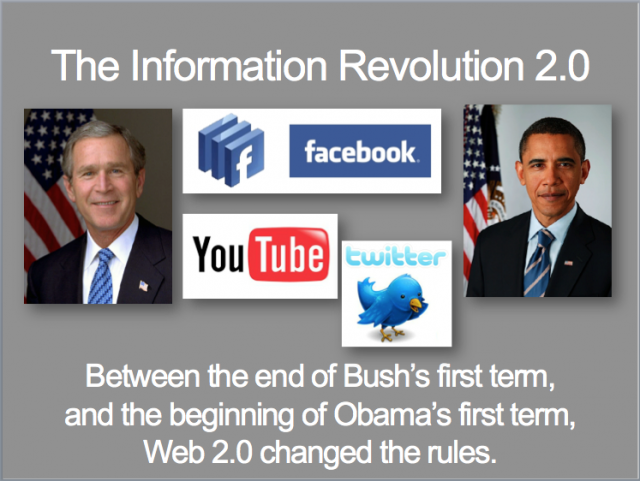
One goal of this course is to help you see your smartphone as an extension of Gutenberg’s press.
Just as movable type rocked the Catholic Church’s hold on Europe and Britain’s hold on America, social media have changed politics in your lifetime. It’s hard to imagine, but at the end of George W. Bush’s first term there was: No Facebook. No You Tube. No Twitter Barack Obama, a rookie Senator with no personal fortune used social media to rake in a huge amount of money to defeat multimillionaire John McCain in 2008. In 2012, Mitt Romney’s campaign bungled its social media program, leaving field volunteers with little or no information to use in getting out the vote on election day, while Obama’s now-famous “Narwhal” system connected voters and volunteers and cranked up turnout of young people and voters of color who elected Obama by a wide margin.
How else have these technologies changed your life as a citizen and the functioning of your government and political system?
This proliferation of information sources has made it challenging to be a news consumer.
Challenges for Consumers:
Challenge 1: Information Overload
Challenge 2: The Blurring of the Lines
Challenge 3: Overcoming Your Own Bias
No 1: How do we find the truth when every day is an information tsunami?
No.2: New business models have proven there is great profit in producing a form of journalism that abandons standards of neutrality, relying on opinion rather than fact. Plus, digital technology makes it possible for anyone to publish worldwide. The result is that a great deal of advertising, publicity, spin and even propaganda is thrown at you every day, dressed up to look like neutral journalism. How can you tell the difference when people blur the lines on purpose?
No.3: Finally, and this may be this course’s most important lesson, New research by social scientists and neuro scientists documents how hard it is for us to hear, see and remember the truth if it challenges our beliefs. How will you overcome your own bias to learn the truth?
Here are the dimensions of the Tsunami:
The average American sees and hears 100,000 words per day outside work, according to the Global Information Industry Center at U.S.C.
And a new study of social media users, published by LikeHack.com,(cq) an online magazine, looks at social media users and finds the average user gets more than 250 links per day on various platforms.You grew up in this reality, so numbers like this may not surprise you. But how might tidal wave of information impact you? Research indicates information overload can make people feel anxious and powerless. Teresa Amabile of Harvard Business School has spent more than a decade studying the work habits of 238 people. She finds people are more creative if they are allowed to focus without interruptions.
This course arose from that question: With so much information flying around, how do we fight the temptation to just go completely passive and learn only what gets pushed on us by social media?
The Daily Show. A significant number of Americans get their news from Comedy Central shows like “The Daily Show” and “The Colbert Report”
What does this do to the definition of journalism? Does that matter? Who is a Journalist?
There are now more cell phones than citizens in the U.S., with serious multitaskers carrying two phones. Of those, the majority are smart phones, with cameras and internet connection. That technology has this effect on the news we see every day: Everyone feels like they can be a journalist and journalists feel like they can find photos of everything that happens.

The latter seems to be true. When Saddam Hussein was hanged December 30, 2006, it was videotaped on a guard’s cell phone. The video was leaked to electronic media and posted on the internet immediately.
Was that in itself journalism? Worldwide, there are 2 billion cellphones in use, which means millions and millions of potential photographers of current events. In this course, we’ll talk about a thorny question: Who is a journalist? Anyone with a cellphone camera?
When this food magazine gets delivered to your home, you might flip through it for a recipe or two and chances are the recipes are well-illustrated, well-tested and described in a way that makes you hungry.
But if you look closely, every single recipe calls for the use of one or more products from Kraft foods.
This is a simple example of a big problem: If you don’t think critically about the sources of the information you use, your information diet will be sneaky ads and marketing instead of a healthy mix of facts.
This news website has a paid reporter to collect and write up news about Nassau County.
Do you think you are getting the full story about Nassau County government from the Nassau County News Network? But who is paying the reporter? Nassau County Executive Edward Mangano, that’s who. Is that reporter going to tell you both the good and bad about Mangano?
Web tools make everyone’s “News” look like the real thing. And online marketers are not prevented or even criticized for using fake news websites to sell products…or politicians.
Challenge No. 3: Overcoming “Own Bias” Neuro scientists and political scientists and sociologists are documenting more and more ways in which our perceptions and memories are unreliable.
If we’re not careful, we cave in to a cluster of psychological effects known as Cognitive Dissonance, which is the human animal’s deep deep discomfort with new information that contradicts longstanding beliefs.
What is Cognitive Dissonance?
Married in a Christian Church, belongs to a Christian congregation, President Obama was attacked during the 2008 campaign for the public remarks of his controversial Christian pastor.
During the Democratic primaries, Hillary Clinton supporters circulated a rumor that Obama wasn’t born in the U.S. and was therefore not eligible to serve as President. In the general election, right-wing groups picked up the rumor in support of a conspiracy theory: that Obama, whose father followed Islam, is a closet jihadist bent on the destruction of the U.S.
Polls show people believe still this stuff. Why? One explanation we’ll talk about is every human’s tendency to seek out information that confirms our beliefs and to deny the credibility of evidence that disputes what we believe or think we already know.
It used to be that only a small fringe of Americans, the Birthers, were arguing that Obama was not really a legal President because he was born, they said, in Kenya. And his mother, knowing he would one day run for President, arranged, from Kenya in 1962 to place his birth certificate in a Hawaii newspaper.
27% of ALL Americans now believe Obama to be foreign born. (And therefore an illegitimate President.)
A July survey in 2010 by CNN found an interesting characteristic of the growing number of people who think Obama is foreign-born.
41% of Republicans believe Obama to be foreign born
15% of Democrats believe Obama to be foreign born
So, your ability to handle the truth may depend on what you already think you know.
Homework:
You received a link to three short readings and instructions for a short written assignment the News Blackout assignment
Assignment: News Blackout:
For 48 Hours
No Facebook or other social media
No News
No Sports Scores
No weather
..Even from family or Friends
Summarize Your Reaction -- Discuss in the Discussion Boards.
-
0 comments
-
1 save
-
Share

